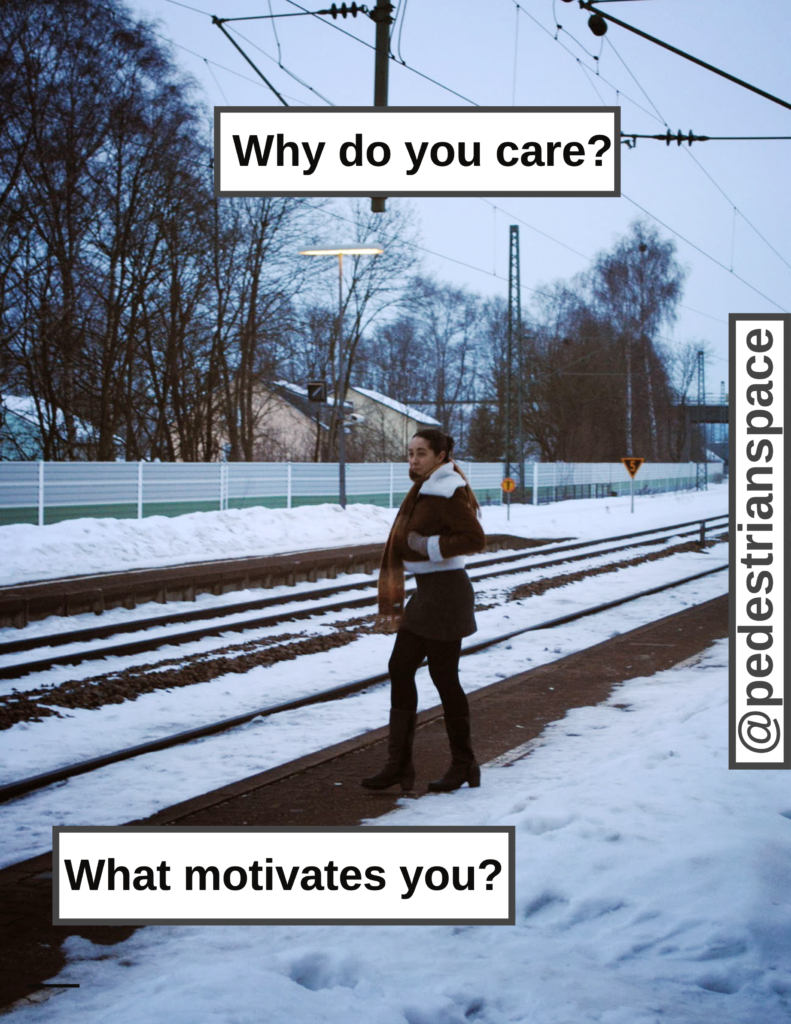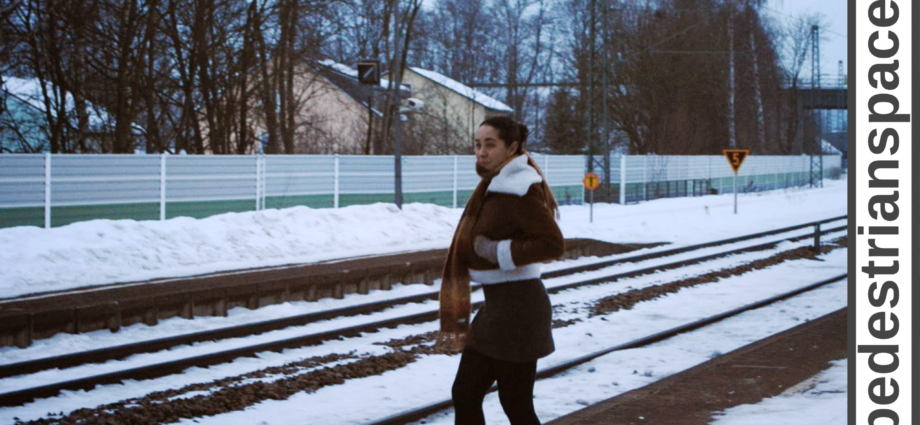Why do you care? What motivates you?
These are questions I’d like to begin a class with in the future, but I’m going to begin by asking it at my workshop tomorrow in Ochota.
I am passionate and committed to researching and working with issues of sustainable urbanism on a daily basis. I find it important to take a moment every now and then to explore what is motivating me. Digging down deep to get to the essence of what binds me to this work.
I used to refer to sustainability for ‘future generations’ but then had to confront myself and strip my language down.
One of my central motivating factors is quality of life now. Sure, there is possibly some existential thread to ‘survival of our species’ for generations to come but I naturally want to also experience the benefit of positive changes and developments in the present tense and witness fellow community members experience them as well.
My husband snapped this photo of me at the train station in Seubersdorf 13 years ago. We had just recently moved to this village of approximately 5,000 people in the Bavarian hinterland. What we didn’t know when we moved there is that there was a train station, something we were delighted to discover during our first week of settling in and exploration.
My husband’s route to work was only possible by car, but the presence of this train station allowed me the freedom to not drive. My quality of life was in fact brilliant. The walkable little village had at least two bakeries, a grocery store, school, cafe, couple of restaurants and the train station was an easy 5-7 minute walk or so. Within 4 minutes by train, you could be in the neighboring town of Parsberg which had many more amenities (my husband and I frequently would meet there for dinner after work and I would go by train). The lovely city of Regensburg was a 38-minute train ride away (often a shorter commute than driving) and the dynamic city of Nürnberg was a 48-minute train ride away- commute distances that became important to me as I ended up working as a freelance photographer here and would frequently do photoshoots in these cities as well as nearby villages.
Why this is important for me to reflect on is because it has a tremendous amount to do with quality of life and the topic of ‘transport exclusion’, which I have been invited to speak on later this Summer. I felt free as a bird and so empowered to go about my daily business with convenient access to the train. However, I know many women in neighboring villages who, like me, had one car between them and their partner and were often left home alone when their partner commuted to work, in a village that might not even have sidewalks, as well as no buses or trains anywhere.
Connectivity to and in rural areas is a massive and difficult topic, but I really value this memory and experience to be able to outline the effects of lack of connectivity on inhabitants. And of course, I think beyond partners who share a car and consider all dependents- older children who want the freedom to move around and not be chauffered by their parents, elderly individuals who have stopped driving, disabled individuals who depend on accessible transport to be able to move around the community and more.
When we first moved to Poland, we lived in a peripheral kind of semi-rural, suburban area. I remember once going to a salon and while chatting with the owner, finding out she had just bought a home there. “How do you like it?” I asked. “I love it,” she said. “But my teenage girls are unhappy because they are completely dependent on me to drive them everywhere.”
Many experiences and diverse chapters of life have now led to this moment where I not only storytell but also research issues of mobility, accessible transit, quality of life and sustainable urbanism. At heart, for me it’s about connection to community, space and place and the quality of our days, nights and time alive.
What motivates you?


